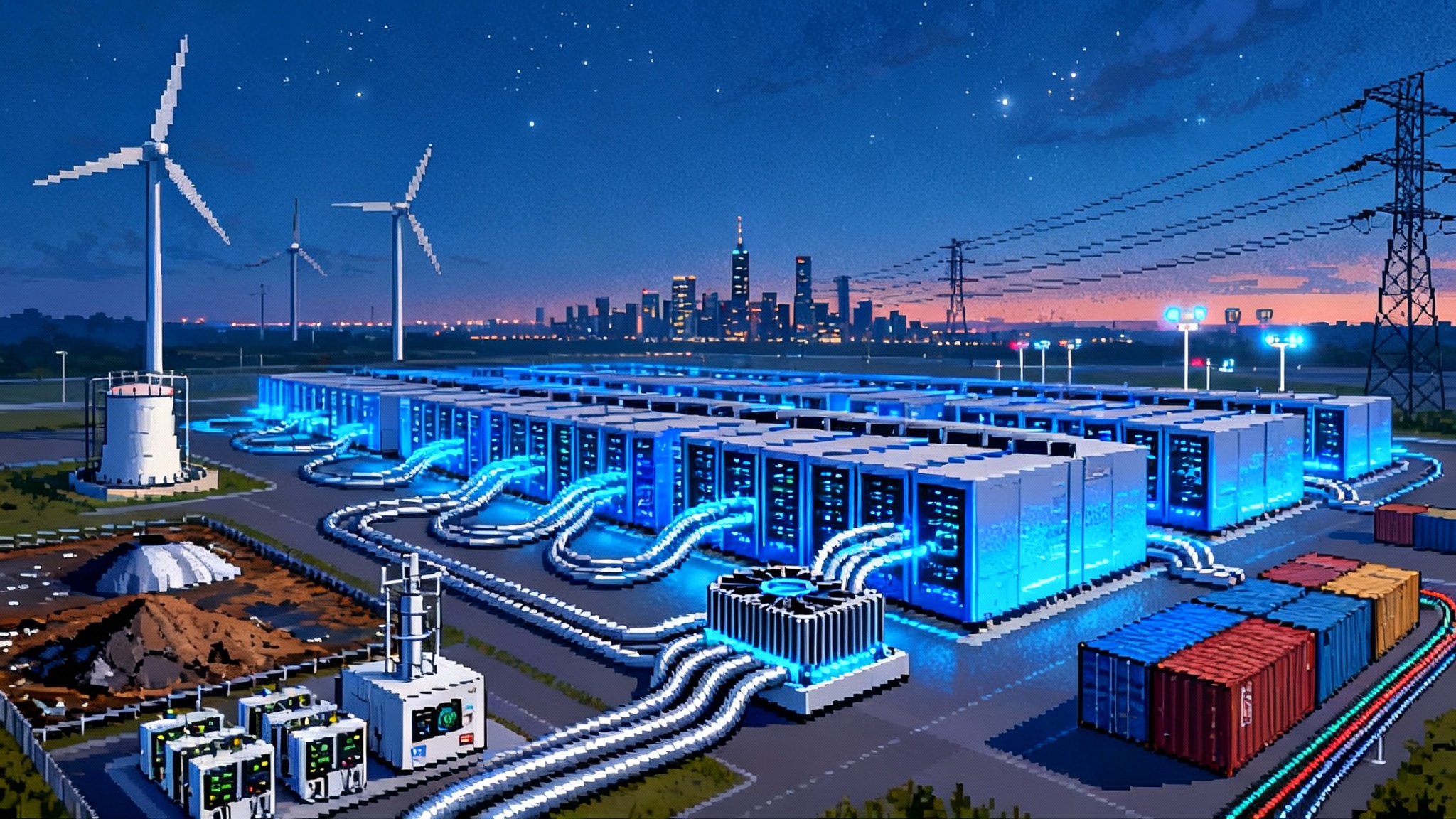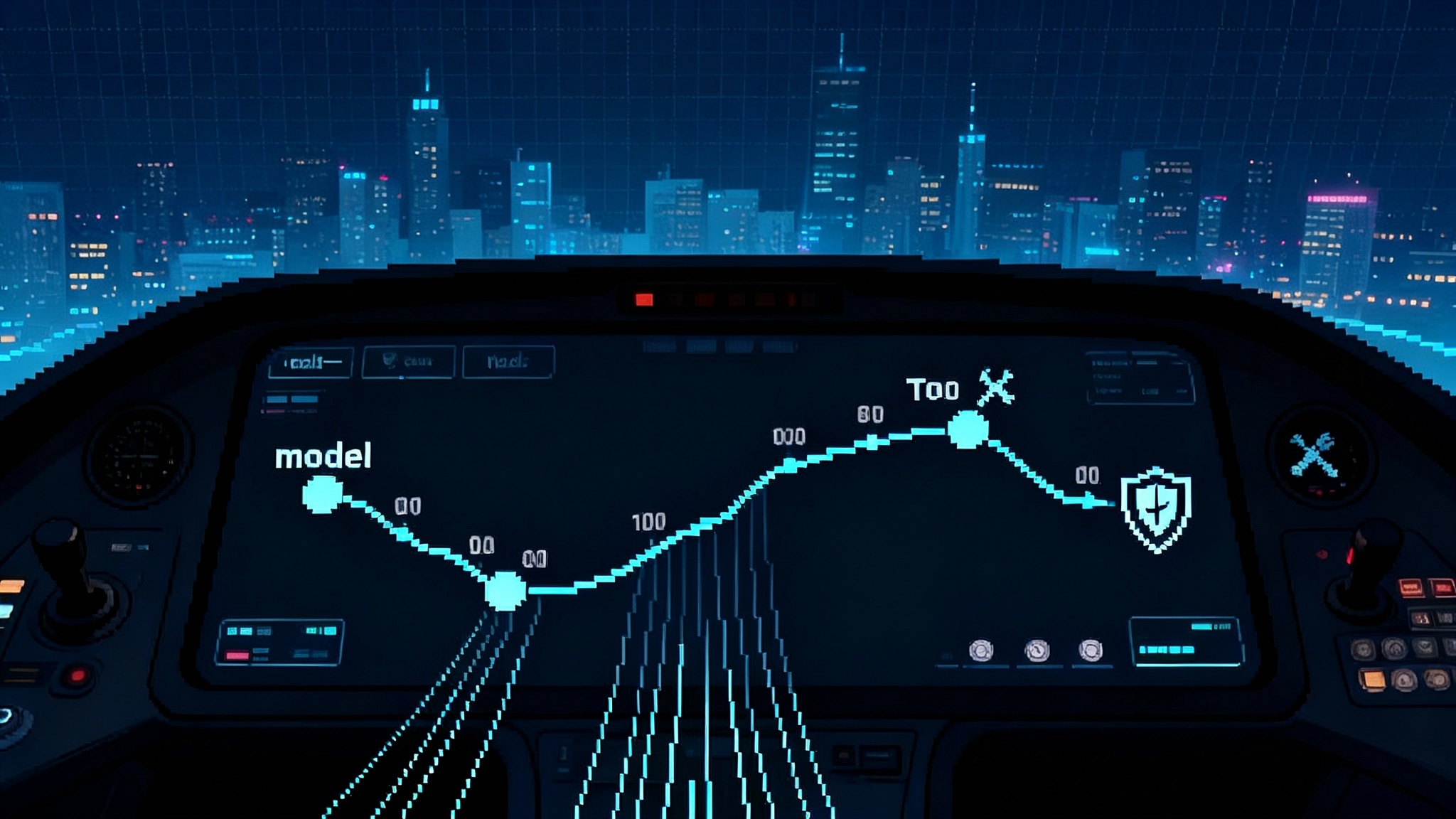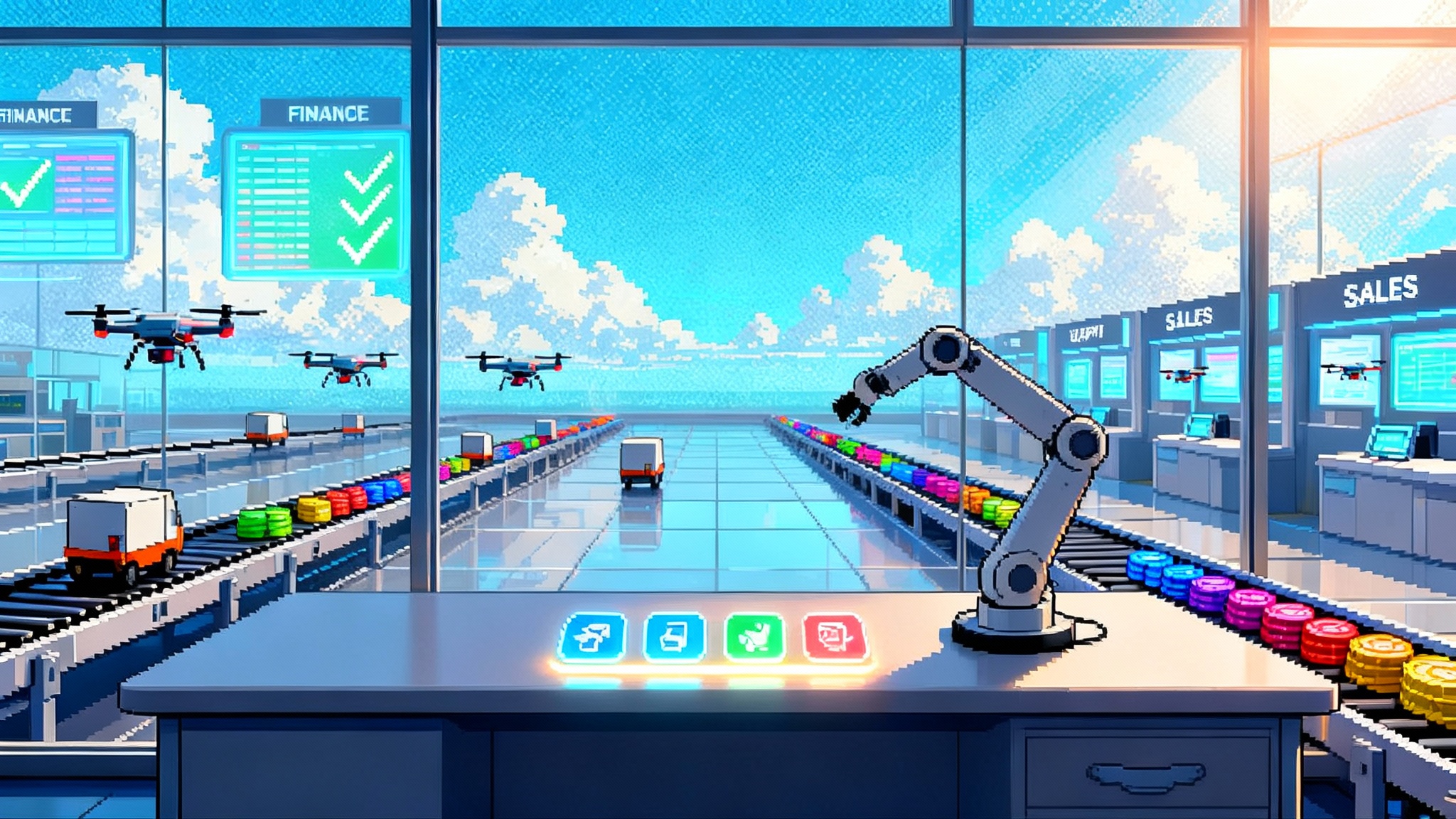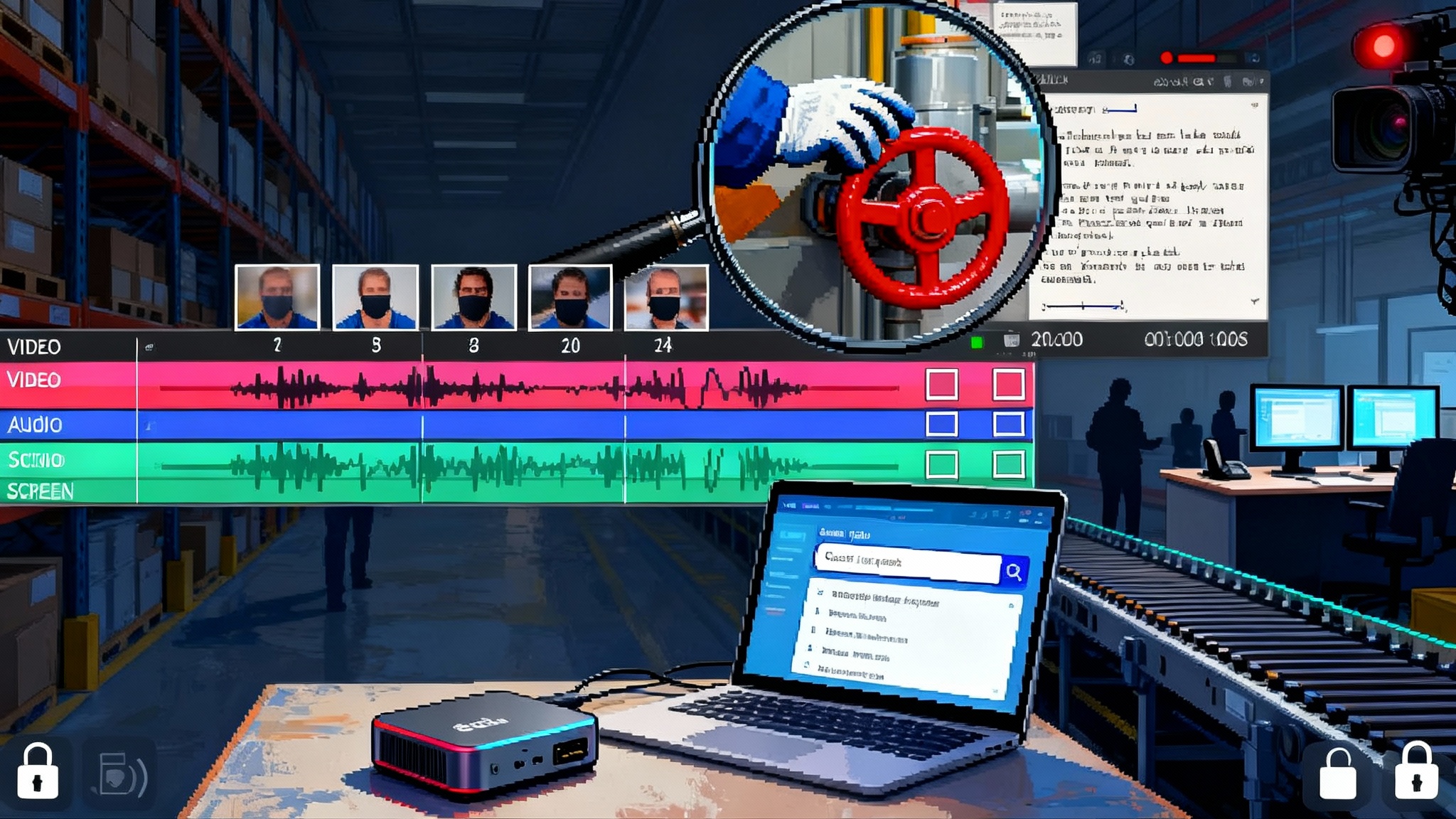ECMWF Switches On AI Forecasts, Weather Enters a New Phase
Europe’s weather powerhouse just put its AI Forecasting System into daily operations beside its gold‑standard physics model. The next year will reshape forecasting tech, risk practice, and procurement across energy, aviation, agriculture, and response.
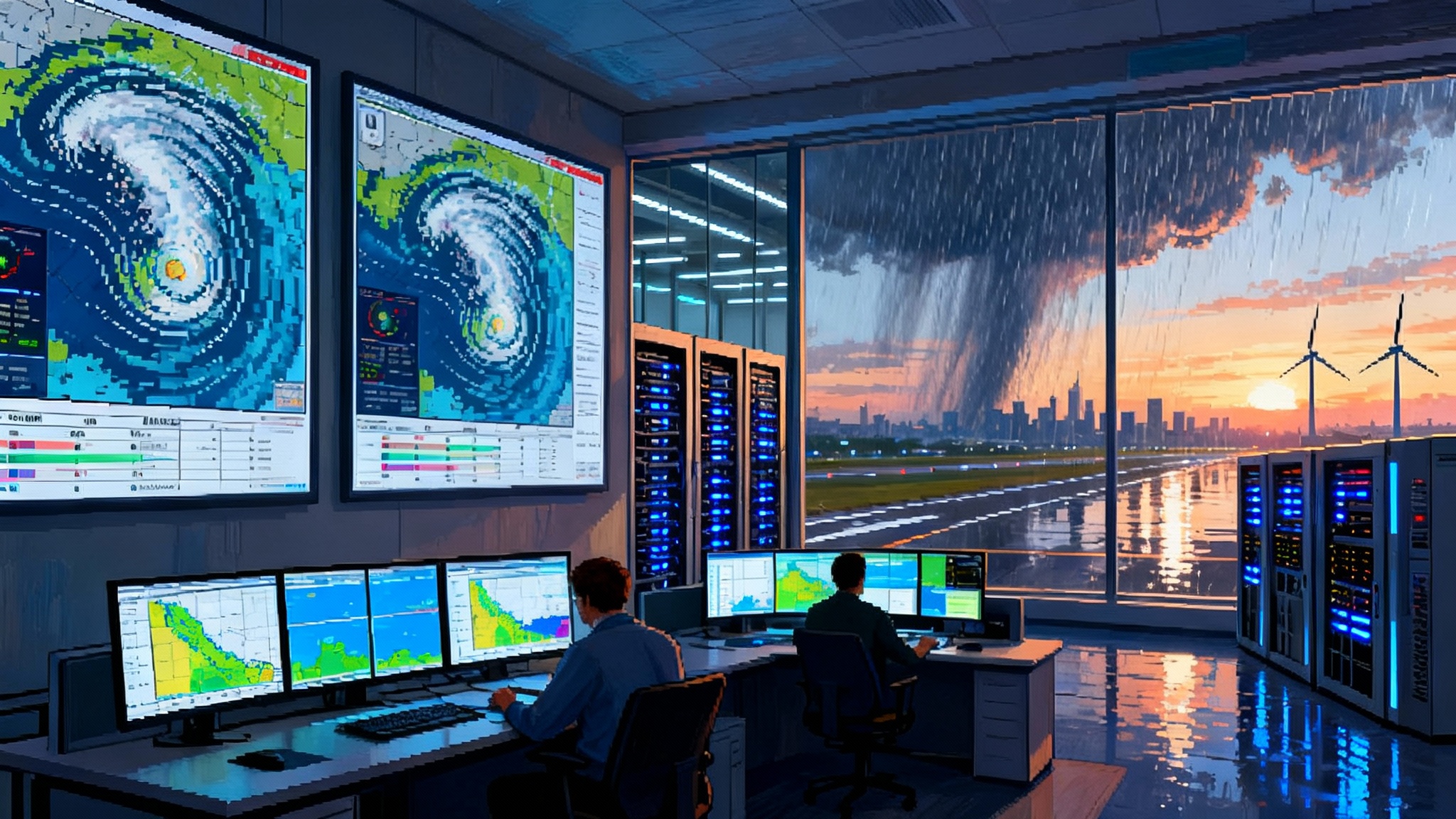
Breaking: AI moves from demo to daily weather
Europe’s top weather center just crossed a line. The European Centre for Medium-Range Weather Forecasts has turned on its AI Forecasting System for operational use, running it alongside its flagship physics model, the Integrated Forecasting System. For years, AI weather was a lab demo that produced viral hurricane tracks and eye-catching storm animations. This week it becomes part of the global forecast backbone.
This is not a small upgrade. It is a signal that the economics, accuracy, and reliability of AI-native forecasting are now strong enough to live beside the world’s most trusted numerical system. It is also a starting gun. Over the next 12 months we will see hybrid AI and physics ensembles become standard, new verification regimes for rare extremes, and a sharp procurement shift from central processing unit supercomputers to accelerator clusters that slash cost per forecast. The shockwaves will reach energy trading desks, airline operations rooms, farm cooperatives, and emergency managers. They will also reach lawyers, auditors, and regulators who now need to reckon with model updates that move at software speed.
What changed this week
The Integrated Forecasting System is a physics-first machine. It solves the equations of fluid motion and thermodynamics across the globe, layer by layer, hour by hour. It is exquisite and expensive. The AI Forecasting System flips the script. It learns the mapping from today’s observed atmosphere to the future directly from decades of reanalysis and recent forecasts. Think of the physics model as a full flight simulator, and the AI model as a master pilot who has flown millions of past hours and internalized how the world usually evolves.
By turning both on for daily operations, the European Centre makes three bets:
- Users gain value from two independent views of the future, not just one. Independence matters. When models make different errors, combining them reduces risk.
- AI-native runs can be far cheaper and faster, which allows bigger ensembles, more frequent updates, and more custom products.
- A hybrid system can learn faster than either world alone. Physics keeps you honest in strange regimes. AI gives you speed, scale, and a second brain.
The important detail is that this is not a swap. The Centre is not replacing physics with AI. It is running them together, testing continuously, and pushing toward a blended future.
How an AI forecast actually works
Most AI weather models are deep neural networks trained on large libraries of past atmospheric states and outcomes. They are fed an analysis of the current state, similar to the Integrated Forecasting System analysis that already blends satellites, radar, aircraft, and surface stations. The model then predicts how that state evolves. Some architectures run hour by hour, others jump several hours at a time. All are constrained by the patterns and limits they learned during training.
Here is the key difference. Physics models explicitly calculate forces, fluxes, and balances. AI models implicitly learn those balances by seeing them many times. That gives AI an edge on speed. A global forecast that takes hours and megawatt levels of power on a physics system can be generated in minutes on a few accelerators. It also gives AI a vulnerability. The long tail matters in weather. If a category of storms only occurs a handful of times in the record, the model may not generalize well to it without careful training, augmentation, and postprocessing.
The best way to picture the split is to imagine two clocks. The physics clock ticks predictably. It is slow, methodical, anchored in equations. The AI clock pulses quickly. It guesses from experience, checks its own balance, and moves on. Run both clocks, and you get the stability of physics with the agility of learning.
Why run both, now
Two forces have converged. First, AI-based forecasts from groups like Google DeepMind, NVIDIA, Huawei, and several academic labs showed that learned models can match or beat physics on many standard scores, including 5 to 10 day global fields like temperature, pressure, and wind. Second, the cost curve for accelerators has dropped sharply relative to central processing units. A global forecast that once required an expensive slot on a central processing unit supercomputer can now be produced in seconds to minutes on a cluster of graphics processing units or similar chips.
The European Centre is the first major international center to integrate an AI-native system into daily operations at scale. Others are close behind. The United Kingdom Met Office, Météo-France, and the German Weather Service are testing AI models. The United States National Weather Service and its research arm, the Earth Prediction Innovation Center, have put GPUs on their roadmaps. Private forecasters like The Weather Company, AccuWeather, and Tomorrow.io are already blending AI products into their stacks.
The hardware flip that follows
When forecasts are cheap, you do more of them. That simple sentence might be the most important operational outcome of this shift.
Physics runs are power hungry. They require massive central processing unit clusters connected by ultra-fast networks. Those investments will continue, but their monopoly is ending. AI-native forecasts run best on accelerators. That means graphics processing unit clusters and other specialized chips, fast local memory, and software frameworks that shuttle data efficiently.
For a national weather service, procurement will change:
- Budget lines migrate from central processing unit hours toward accelerator capacity. Expect mixed clusters where physics jobs land on central processing units while AI jobs sit on accelerators, with a common storage and pipeline layer.
- Cost per forecast drops. Studies have shown orders of magnitude lower compute cost for AI models at global scale. The exact ratio varies by resolution and lead time. The direction is unambiguous.
- Delivery cadence accelerates. Instead of two or four model cycles per day, you can run hourly updates, regional rapid refreshes, and targeted ensembles around high-impact events.
The upstream change shapes the downstream world. More frequent, richer forecasts let energy traders update hedges intraday, airlines reroute in near real time, farms time irrigation windows by the hour, and emergency managers stage assets earlier with better confidence bands.
Hybrid ensembles are the new default
Weather is uncertain because the initial state is messy and the system is chaotic. Ensembles quantify that uncertainty by running many slightly different forecasts and summarizing the spread. The next year will be about hybrid ensembles that mix physics and AI members.
A practical recipe looks like this:
- Keep the primary physics ensemble. It remains the anchor, especially for extremes that rely on faithful physics like air mass boundaries and rotating storms.
- Add AI-native members. Use different AI architectures and training sets. Diversity matters more than raw count.
- Calibrate the blend. Use a rolling window of recent events to weight members by local skill and by variable. Winds over the North Atlantic may favor one set, precipitation over the Alps another.
- Expose the whole distribution. Do not hide spread. Users want quantiles, confidence bands, and scenario clusters, not a single map.
This is not a beauty contest. It is a portfolio problem. The goal is better risk estimates for the variables that drive decisions, such as wind ramps for power, icing potential for aircraft, and soil moisture for planting.
Verifying extremes without fooling yourself
The public will judge this shift on one criterion: performance when it matters most. That means heat waves, explosive cyclogenesis over the Atlantic, atmospheric rivers slamming the West Coast, derecho wind storms, and tropical systems that wobble toward landfall. These are rare by definition, which makes them hard to validate.
Verification must change in three ways:
- Build event libraries. Curate catalogs of past extremes with high-quality observations. Use them to stress test models out of sample.
- Score the tails, not just the means. Standard accuracy metrics over the whole globe can hide failures in rare regimes. Use metrics that weight extremes and capture spatial structure, such as neighborhood scores and reliability of high quantiles.
- Measure decision value. For aviation, did the forecast reduce minutes in turbulence. For power grids, did it help maintain frequency and reduce reserve activation. For emergency managers, did it improve evacuation timing. These are not abstract questions; they are operational checks.
The most honest way to build trust is to publish clear scorecards. Show where AI improved things, where physics still leads, and where the combination did best. Do it by region, by variable, and by lead time.
What this means for four industries
Energy trading
- Cheaper ensembles mean richer probability distributions for wind and solar ramps. Traders can adjust hedges more often and with narrower spreads.
- Short-term load forecasts get tighter with better temperature and humidity inputs. Utilities can schedule peakers and demand response with fewer surprises.
- Action: set up dual-source ingestion that treats the AI ensemble and the physics ensemble as separate feeds. Compute blended quantiles and adjust in real time based on observed bias. Start with wind at hub heights and solar irradiance.
Aviation
- Faster updates let dispatch optimize routes for jet streams and avoid clear-air turbulence with less slack. Fuel burn and contrail formation both improve.
- Convective initiation timing remains tricky. Use hybrid ensembles to capture storm onset windows and base go or do not go buffers on quantiles, not deterministic cells.
- Action: integrate probability of exceedance thresholds for headwinds and turbulence into the flight planning software. Test on transatlantic corridors first where gains are largest.
Agriculture
- Field-level decisions rely on moisture, temperature, and wind at specific hours. Frequent updates improve spraying windows, frost protection, and irrigation scheduling.
- Seasonal outlooks still need physics, ocean coupling, and teleconnections. AI can help on the subseasonal bridge by refining weekly patterns.
- Action: deliver gridded hourly forecasts with 5 to 95 percent ranges to farm management systems. Flag risk days for drift, heat stress, and soil saturation.
Disaster response
- For floods, compound risk matters. Hybrid ensembles can track rainfall, snowpack, and antecedent soil moisture together, then drive hydrologic models.
- For wildfire, wind shifts and humidity troughs decide containment. Rapid refresh with AI members raises the odds of catching a turn.
- Action: build a dashboard that plots ensemble spread over impact layers such as hospitals, elder care, and evacuation routes. Train teams on what uncertainty means operationally.
Liability, audits, and updates at software speed
When a government center flips on a new forecasting system, it inherits new obligations. AI models update more often than physics models. Data pipelines can change with new satellite calibrations. These rhythms do not fit the old cadence of rare version bumps.
Three practices will define responsible operation:
- Version discipline. Treat models like critical software. Tag every operational run with the exact model version, training data hash, and postprocessing script. Keep a registry and freeze periods around high-risk seasons.
- Independent audit. Maintain an external verification unit that is empowered to publish. It should test bias correction, probabilistic sharpness, and reliability, and should simulate decision value for critical sectors.
- Clear accountability. When forecasts support public safety decisions, there must be named owners and escalation paths. If a model is updated mid-season, users need a bulletin that explains the change, the expected effect, and a rollback plan.
Legal frameworks will catch up. In the meantime, the safest path is transparency and redundancy. Run both systems, communicate clearly, and give users tools to compare and blend.
The open secrets inside AI weather models
AI-native models do not solve every hard problem. They skip some that physics models tackle head on.
- Data assimilation remains the backbone. The morning analysis that stitches satellites, radars, aircraft, buoys, and surface stations into a coherent state is a physics-heavy optimization. AI can help with bias correction and quality control, but the core system still matters.
- Fine-scale precipitation is difficult. AI excels at large-scale patterns. Convection at neighborhood scales often needs dedicated downscalers and local calibration with radar and gauges.
- Non-stationarity is real. The climate is shifting. Training on past data can bake in biases if the world is changing. Regular retraining and bias correction must be part of operations.
Understanding these limits helps set expectations. The upside remains huge because most daily decisions are driven by patterns and probabilities at scales where AI performs well and can run very often.
How builders can plug in
If you build products on top of weather, the new stack looks different.
- Ingest two feeds. Get the physics ensemble and the AI ensemble. Keep them distinct. Do not average blindly. Learn context-specific weights by location, variable, and lead time.
- Keep a local bias model. Maintain a lightweight correction layer that tunes forecasts to your sites using recent observations. Retrain it weekly. Monitor drift.
- Expose uncertainty. Deliver percentiles and scenario clusters. Users make better choices when they see the range.
- Store the evidence. Log your forecast inputs, corrections, and decisions. If something breaks, you will want to replay the day.
Most of this is simple. The hard part is organizational. Make one team own the forecast blend. Give them a clear service level objective. Put a dashboard on the wall that shows skill scores and recent misses.
What to watch in the next 12 months
- Resolution creep. AI models will push toward finer grids and longer lead times. Watch how they handle sharp gradients like fronts and orographic precipitation.
- Rapid refresh adoption. Hourly global updates will become normal for AI members. Expect regional nests that refresh even faster.
- Cross-center blending. The European Centre will not be alone. Expect blends that include the United States Global Forecast System, the United Kingdom Unified Model, and private AI members.
- Edge forecasting. As accelerators get cheaper, local agencies and companies will run their own short-term AI ensembles near the data sources. That lowers latency and raises resilience.
The meta-trend is that weather becomes more like modern software. Faster release cycles, continuous integration, and user-specific products. That is a good thing if we keep the discipline that made physics models trustworthy in the first place.
The bigger picture
Humans built weather forecasting on the back of equations that were carved into silicon over decades. We are now adding a learning layer that lets the system respond with speed and scale. The European Centre’s decision to operate AI forecasts daily is a turning point because it treats AI as infrastructure, not a toy.
If you are a policymaker, focus on the verification plumbing and on procurement flexibility so that teams can buy accelerators without a multiyear detour. If you are an operator, run hybrid ensembles now and measure the business value carefully. If you are a builder, assume your users will want hourly updates and honest uncertainty.
The atmosphere is not getting simpler. Our tools are getting better. With physics and AI working in tandem, we can make the world’s most important prediction system faster, cheaper, and more useful where it counts. The next time a storm forms, the forecast will not just be a prettier map. It will be a more actionable distribution, updated more often, delivered to the people who need it, and backed by two very different engines that agree more often than they disagree.
That is how you cross from demo to daily life.
